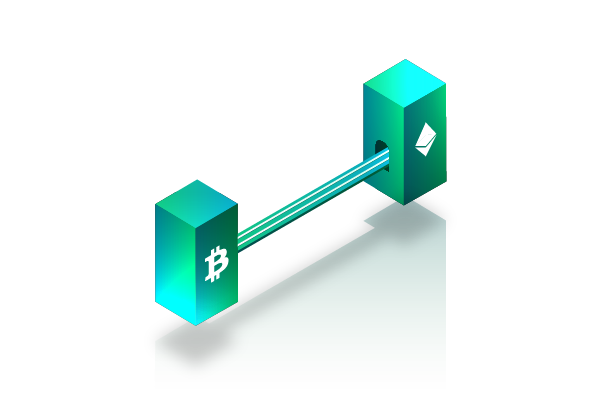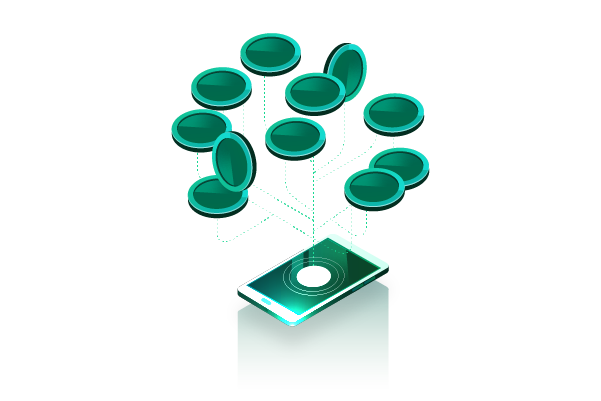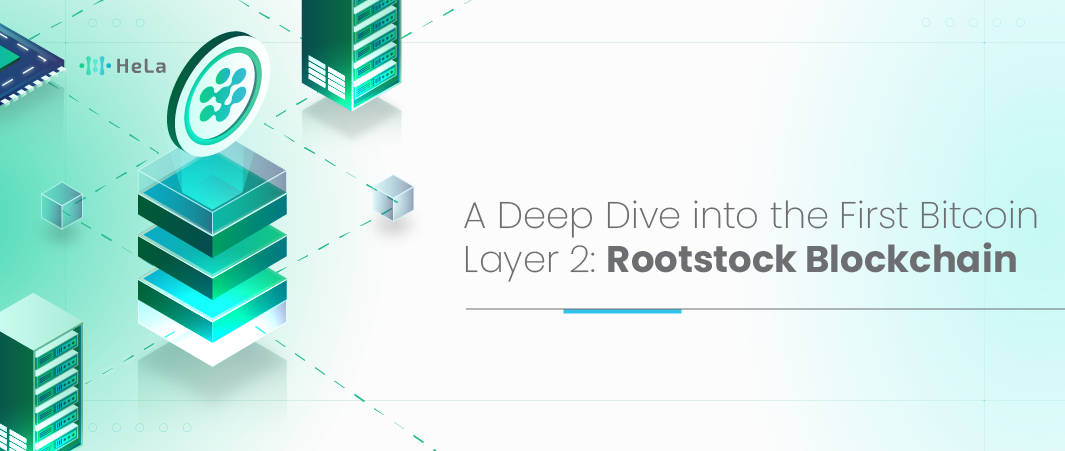When bullruns begin, scalability and gas fees become major headaches for top blockchains. But in recent years, Layer 2 networks have started to alleviate this problem by making transactions faster and cheaper.
Good examples of Layer 1 blockchains include the likes of Bitcoin and Ethereum. As the name suggests, Layer 2 protocols sit on top of these networks, with one their most important use cases being handling transactions off-chain, bundling them together, and submitting the bundle to the mainnet for verification. Thus, relieving the first layer from the need to individually validate transactions.
Rootstock, which launched in 2018, was the first Layer 2 to be built on top of Bitcoin. While other projects claim to be L2s, few meet the criteria set out by Bitcoin Magazine: using BTC as a native asset, deploying Bitcoin as a settlement mechanism for enforcing transactions, and demonstrating a fundamental dependence on the network. Rootstock ticks all of these boxes.
Here, we’ll explain what Rootstock offers to the crypto community, how this blockchain is secured by 60% of Bitcoin’s hashrate, highlight the dApps already built on this network, and why it’s been rising in popularily among developers.
Rootstock: A bridge between Bitcoin and Ethereum

Rootstock was built with the belief that Bitcoin can be more than a store of value. By leveraging Bitcoin’s security and offering smart contract capabilities, Rootstock emerged as the first Bitcoin layer 2, bringing the benefits of both Bitcoin and Ethereum into one blockchain.
Smart contracts on Bitcoin
Ethereum is best known for introducing smart contracts to the world, which allow contracts to be executed between two parties automatically when conditions are met, without the need for a middleman.
Rootstock makes this infrastructure available on top of Bitcoin without compromising its core layer — paving the way for decentralized apps to operate on this OG blockchain for the first time.
Security and hashing power
Bitcoin and Rootstock use the same Proof-of-Work consensus mechanism, and this Layer 2 is secured through a process called merged mining. Rootstock leverages over 60% of Bitcoin’s hashing power for security, and miners have the potential to receive rewards from both chains.
Taproot upgrade
Back in 2021, one of the most significant upgrades in Bitcoin’s history — Taproot — went live. As well as simplifying and speeding up the process of verifying transactions, it improved privacy and enhanced the network’s scalability.
Taproot had a huge impact on Rootstock by making it easier to work with smart contracts on Bitcoin. That’s because the upgrade reduced the latency of transactions, and cut the amount of space they take up in each block.
Turing complete system
Bitcoin was deliberately designed to be Turing incomplete, meaning its scripting language has certain limitations, in order to prioritize security.
By contrast, Ethereum’s Virtual Machine is Turing complete, enabling the complex and diverse smart contracts and dApps we see on the market today. Rootstock’s Virtual Machine (RVM) is almost identical to EVM — so developers can create intricate dApps while benefiting from Bitcoin’s infrastructure.
Rootstock, via its native token RBTC, RVM, and merged mining, bridges the gap between Bitcoin and Ethereum by providing developers with a secure platform for building smart contracts on Bitcoin.
Why developers are choosing to build on Rootstock

Six years after making its debut, Rootstock has become the home of DeFi on Bitcoin. Just some of the dApps operating on this network include the trading and lending platform Sovryn, the BTC-backed stablecoin protocol Money on Chain, and the cross-chain wallet Liquality. Dozens of other applications are part of Rootstock’s growing ecosystem — offering everything from fairer remittances and microloans, to non-fungible tokens and trading platforms.
Developers have been drawn to Rootstock’s infrastructure for multiple reasons, including:
- Security: Rootstock benefits from Bitcoin’s unparalleled security, with the blockchain cultivating a 1–% uptime and strong track record in the 15 years since it went live.
- EVM compatibility: Many existing dApp developers are accustomed to building on Ethereum. Rootstock offers familiarity by enabling them to use the same Solidity tools and libraries — and the ability to port Ethereum smart contracts directly to Rootstock.
- Lower fees: One of the biggest pain points associated with building on Ethereum is fees, which can deter end users from engaging in dApps because of the cost. Rootstock is about 50 times cheaper than Ethereum — preventing gas from eating into everyone’s hard-earned crypto as funds are moved from A to B.
- Fast transactions: Rootstock is 10 times faster than Ethereum. This Layer 2 creates a block every 30 seconds, with the ability to reach 15 seconds, while Bitcoin only creates one every 10 minutes. The Rootstock network can achieve up to 300 transactions per second, streets ahead of both legacy networks.
- Developer initiatives: Beyond the clear technological benefits, developers are increasingly drawn to this Layer 2 network through the Rootstock Grants Program. A grand total of $2.5 million has been set aside for crypto projects that can add utility to this blockchain. As well as receiving funding, successful applications are given mentorship and technical support as they bring their dApp to life.
Making Bitcoin work for everyone

Delivering the perfect blend of speed, scalability and security, Rootstock is the Layer 2 blockchain for Bitcoin — making Everyday DeFi a reality for consumers around the world.
Rootstock is the first, biggest, and longest-lasting Bitcoin sidechain. It is the only Bitcoin layer 2 that combines the security of Bitcoin’s proof-of-work, with Ethereum’s smart contract capabilities.
Rootstock is open-source, EVM-compatible, and secured by over 60% of Bitcoin’s hashing power, which makes it a gateway to a vibrant ecosystem of dApps that continues to evolve to become fully trustless.

